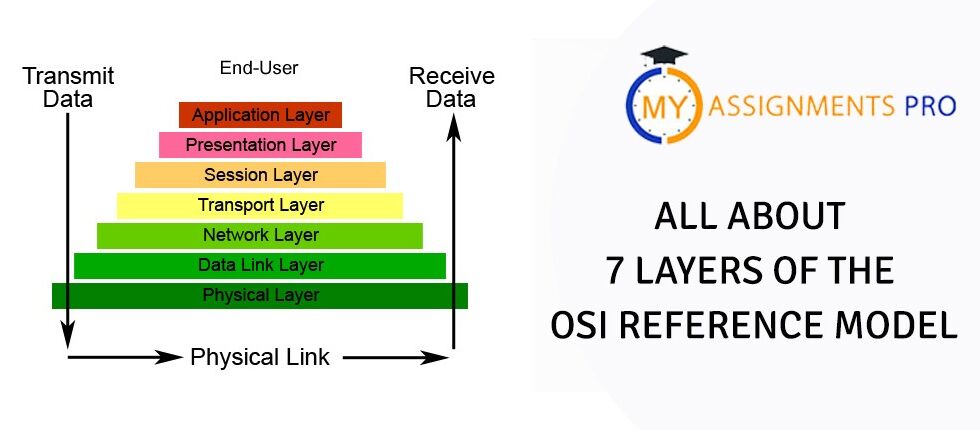Students of telecommunication not only have to learn about the 7 layers of the OSI reference model, but they also have to do homework on it. It’s not an easy subject to talk about, so you’ll need as much help as possible. Contacting My Assignments Pro for Assignment Help in Melbourne is one way to get past a problem with your 7 Layers of OSI Reference Model assignment. But if you want to do the homework or study it on your own, let’s talk about the 7 layers of the OSI reference model.
How to Explain the OSI Model:
The Open Systems Interconnection Model (OSI Model) is a set of ideas to explain how a networking system works. The OSI model breaks down how computers work into a universal set of rules and requirements so that different products and software can work together. In the OSI reference model, a computer system’s communications are separated into seven abstraction layers: Physical, Data Link, Network, Transport, Session, Presentation, and Application.
The OSI was published in 1984 by the International Organization for Standardization. It was made when network computing was just getting started (ISO). Even though it doesn’t always match specific systems, the OSI Model is still used to talk about Network Architecture.
The OSI Model’s 7 Layers
- Physical Layer:
In the lowest layer of the OSI Model, raw, unstructured bits of data are sent from the device’s physical layer, sending the data to the physical layer of the device receiving the data. This can be done either electrically or optically. It can list voltages, pin layouts, cable lengths, and radio frequencies. You might find existable resources like network hubs, network adapters, modems, cabling, and repeaters at the physical layer.
- Data Link Layer:
Data is sent from one node to another using directly connected nodes at the data link layer. The data is put into frames. The data link layer also fixes any mistakes at the physical layer.
The data link layer is made up of two of its layers. The first is media access control (MAC), which controls the flow of data between devices on a network and lets them talk to each other simultaneously. The second is logical link control (LLC), which controls flow and errors on the physical medium and figures out what protocols are being used.
- Network Layer:
The network layer is in charge of getting frames from the data link layer and sending them to the right places based on the addresses inside the boundaries. Logical addresses, such as IP addresses, are used by the network layer to find the destination (internet protocol). Routers are an essential part of this layer because they send information between networks where it needs to go.
- Transport Layer:
Data packets are sent and checked for errors by the transport layer. It controls the size, order, and final data transfer between systems and hosts. TCP, or the Transmission Control Protocol, is one of the most common examples of a transport layer.
- Session Layer:
The session layer is in charge of how computers talk to each other. At layer 5, a session or connection between two computers is set up, managed, and shut down. Authentication and reconnections are also part of session layer services.
- Presentation Layer:
For the application layer, the presentation layer forms or translates data following the syntax or semantics that the application is capable of interpreting. It is sometimes called the syntax layer because of this. This layer can also handle the application layer’s encryption and decryption needs.
- Application Layer:
Both the end-user and the application layer work directly with the software application at this layer. Like a web browser or Office 365, end-user apps use this layer to get network services. The application layer figures out who to talk to, what resources are available, and when to talk.
Last Words!
The layers and OSI reference models are described above. My Assignments Pro helps with assignments help in Melbourne can be made from this, and if you’re in college, you’ll need to know all the details to do well on the assignment. But figuring out the roles of the Data Link layer, the Network layer, and the Transport layer are, which layer is which, and how it sets the voltage, wire speed, and pinout of cables and moves bits into devices can be quite hard.
But the team at My Assignments Pro can help you learn about the 7 layers of the OSI reference model and help you do well on any telecommunications-related assignments.


